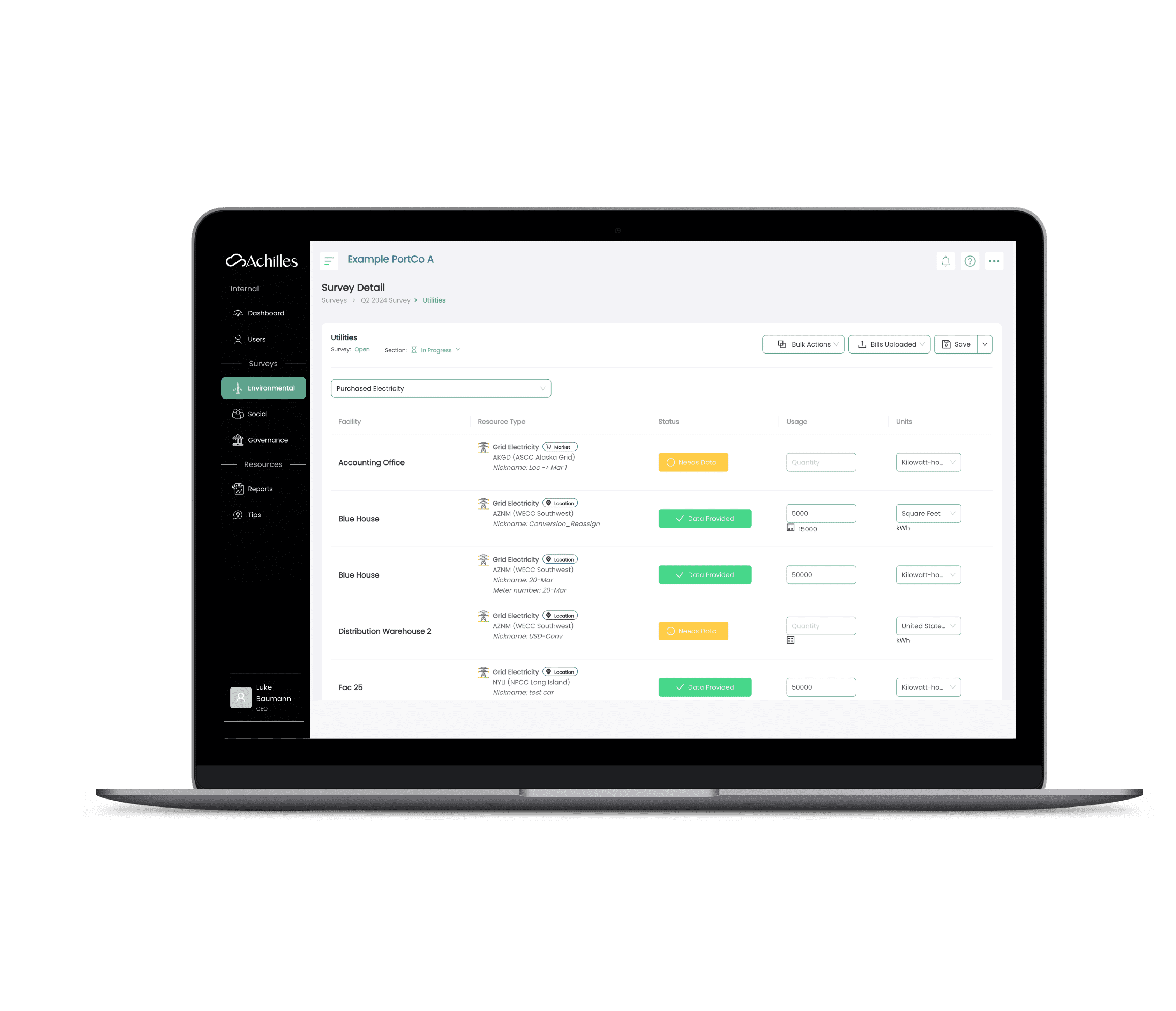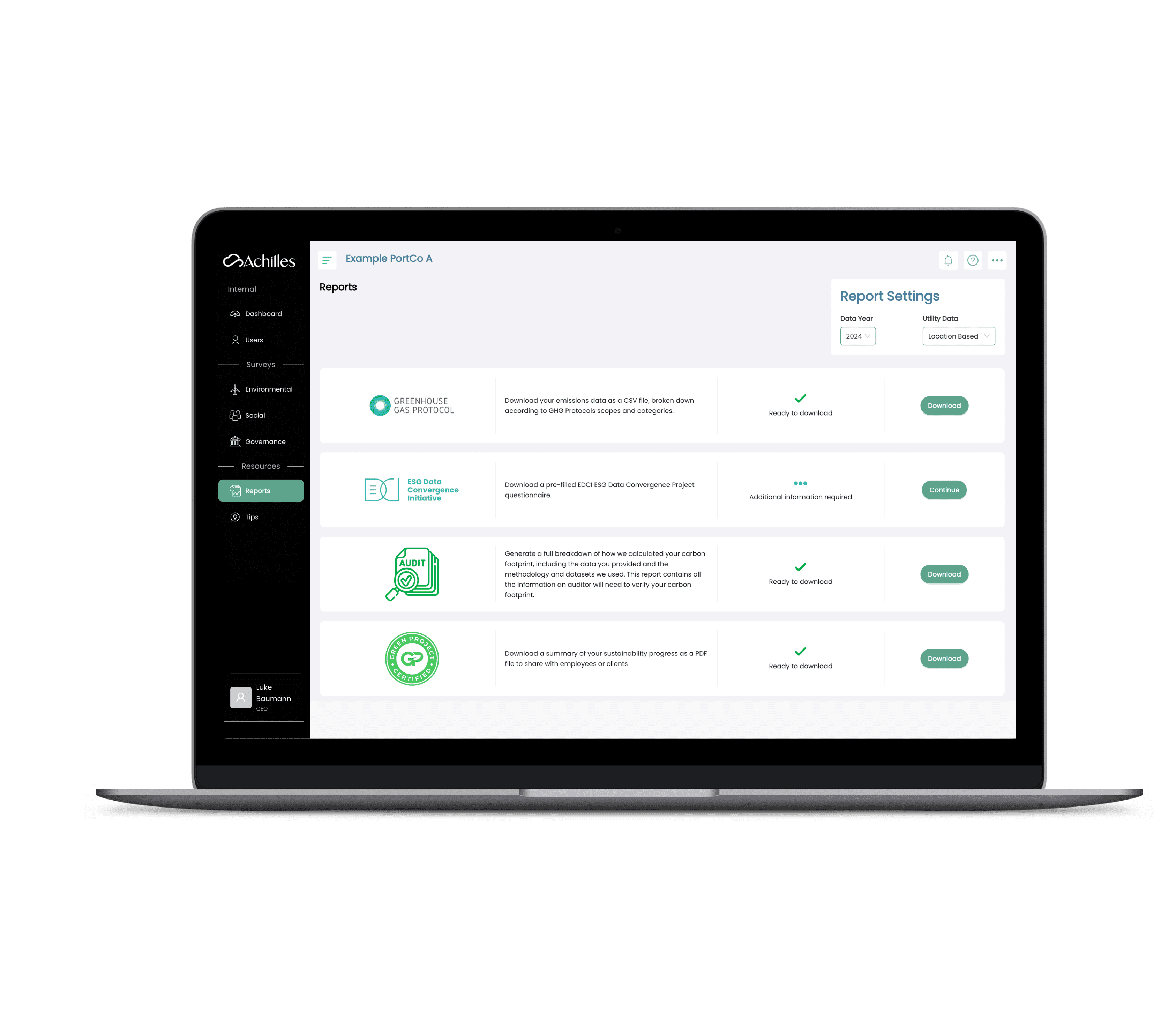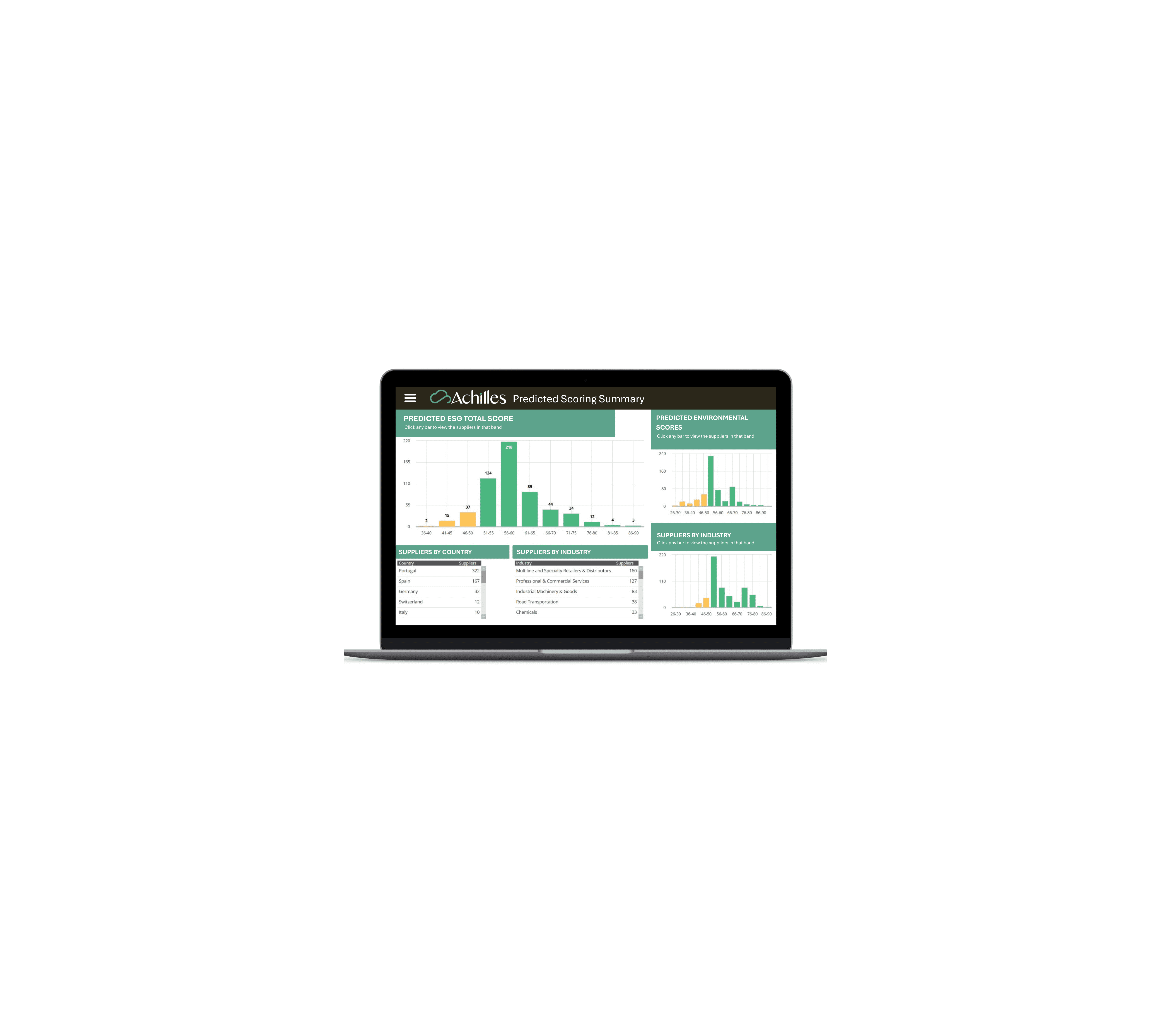Take Control of Your Carbon Data and Reporting with Achilles
Purpose-built for growing businesses, Achilles Carbon Accounting automates carbon footprint measurement and simplifies emissions reporting. Stay compliant, hit sustainability goals, and focus on what matters.







